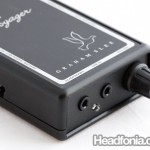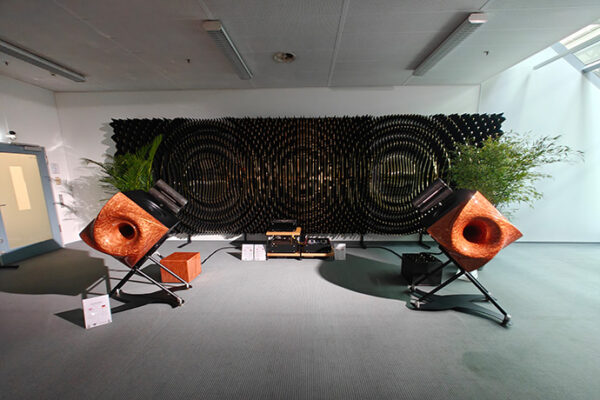 I’ve been talking to Graham Slee regarding the design of the Voyager that I reviewed, and through our conversation, he explained some information regarding his amplifiers. First is the auto-gain feature that would equalize the volume on headphones with different impedance ratings.
I’ve been talking to Graham Slee regarding the design of the Voyager that I reviewed, and through our conversation, he explained some information regarding his amplifiers. First is the auto-gain feature that would equalize the volume on headphones with different impedance ratings.
Having reviewed a lot of portable amps, I also noticed that ultimately the power a portable amplifier has is limited to the voltage rating of the power supply. Since the Graham Slee Voyager accepts up to a 24V supply, I am curious on what kind of power can the Voyager deliver, when connected to a 24V supply. Mr. Slee explains that the voltage regulator inside the Voyager circuitry would equalize either the 5V and the 24V supplies to the default 9V level.
Here are his own words on the auto-gain:
“As with all our headphone amplifiers the Voyager uses our “auto-adjusting” technique where it adjusts its overall gain to suit the load impedance. Here is a list showing the gain into a range of headphone impedances –
8 Ohms 0.63 (-4dB)
16 Ohms 1.04 (0.37dB)
32 Ohms 1.55 (3.8dB)
64 Ohms 2.04 (6.2dB)
100 Ohms 2.31 (7.3dB)
150 Ohms 2.50 (8dB)
300 Ohms 2.73 (8.7dB)
600 Ohms 2.86 (9.1dB)
As the load impedance increases the gain increases to keep pace, and the net result is to keep the sound pressure level approximately similar.
If a headphone or in-ear device has a high sensitivity it will obviously be louder than a similar impedance device having poorer sensitivity.
All three of our headphone amplifiers use this technique. The Solo SRG II goes further using it for transmission line driving of the headphone cable with load sensing feedback. The Voyager gets as close to the transmission line driving technique as we can, but the limitations are the voltage supply because it’s a portable. Transmission line driving has the effect of cancelling some of the headphone cable influence which is another way of us helping our customers save money by not having to recable their headphones (unless they really want to). ”
And here is the part about the supply voltage:
“Increasing the mains derived supply voltage will not lead to an improvement (unless the power supply has other good properties), the additional voltage would only serve the purpose of heating the voltage regulator inside the Voyager, its output being 9V to match the battery supply. Likewise the USB power is charge pumped up to 9V to give a seamless performance on any power option.”
I really appreciate Mr. Slee taking the time to provide us with a clear information straight from the source.








